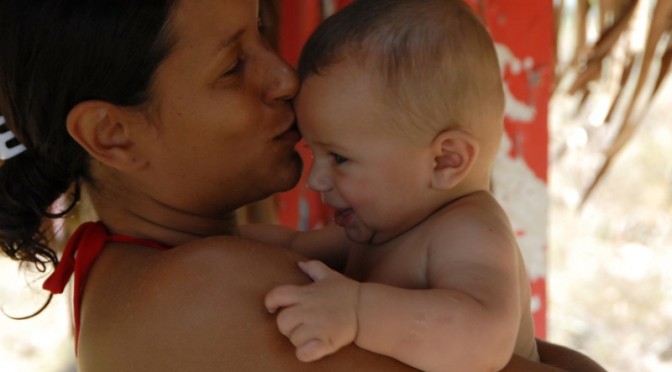A baby is the perfect dance partner to raise mutual consciousness. They begin life hyper-aware, hungry for learning, and often seem ecstatic or in rapture.
Newborns are innately tuned in, investigating and deciphering complex changes in music and languages. They are curious, enthusiastic, and energetic. With our help, they learn to punctuate their robust awareness by focusing their attention. In this way they necessarily prune away some of the over-abundant brain neurons they were born with.
“ Mindfulness implies there is action of the mind. We purposely set ourselves to pay attention to our minds. We exert effort. Awareness is different. Awareness is devoid of any action…. Here mindfulness is the cause, and awareness is the effect.” Dr. Thynn Thynn, Living Meditation, Living Insight, 2003. See also: http://tinyurl.com/d6vmlq
Adults have developed the capacity to focus their thoughts and mindfully choose their actions via the brain’s prefrontal lobe. Though this ability is certainly endangered by stress and social media hyper-connectivity. These exacerbate our mind’s tendency to flip-flop from one thought to the next, much like, as the Buddha described: a fish out of water. Which is reason enough to emulate the effort and energy of a baby eagerly absorbing the wonders of her world. Observe how a baby moves from states of concentration to tranquility.
With baby as a reminder, and our own effort to control the flood of input to our senses, we can mutually create: “sense consciousness”. Allow a gap to emerge between a thought and thoughtless reactions. The latter may arise from a pervasive mood persistent because of lack of sleep, or because patterns of certain responses have become habitual. Having strong likes and dislikes, judgments of good and bad, feelings of resentment or anger, clinging to our desires or opinions—all these will feed impatience. Recognize that doubt, worry, restlessness, ill will, sensual desires, and dullness and drowsiness are hindrances to mindfulness, and can be deleteriously contagious. Replace, confront, (or repress if you must) unwholesome thoughts or fears with wholesome ones.
With unwholesome factors resolved, it is possible to cultivate bare attention: open and alert one-pointed concentration on wholesome states of mind. Contemplate the changing body through the breath and the form and carriages of your dance together. Watch a baby gaze from one novel or familiar experience after another—stay with them with unbroken attentiveness. Let them lead the dance of life. Listen to and feel their beat. Seek and share serenity and insight. This practice is difficult, but a baby is the perfect catalyst to help us bring mindfulness into daily life.
“ Mindfulness implies there is action of the mind. We purposely set ourselves to pay attention to our minds. We exert effort. Awareness is different. Awareness is devoid of any action…. Here mindfulness is the cause, and awareness is the effect.” Dr. Thynn Thynn, Living Meditation, Living Insight, 2003. See also: http://tinyurl.com/d6vmlq
For Further Reading:
‘Ear Plugs to Lasers: The Science of Concentration” by John Tierney, published in the New York Times: May 4, 2009 http://tinyurl.com/cklnzh
“Inside the Baby Mind” by Jonah Lehrer, published in the Boston Globe online April 26, 2009 http://tinyurl.com/css6w9
